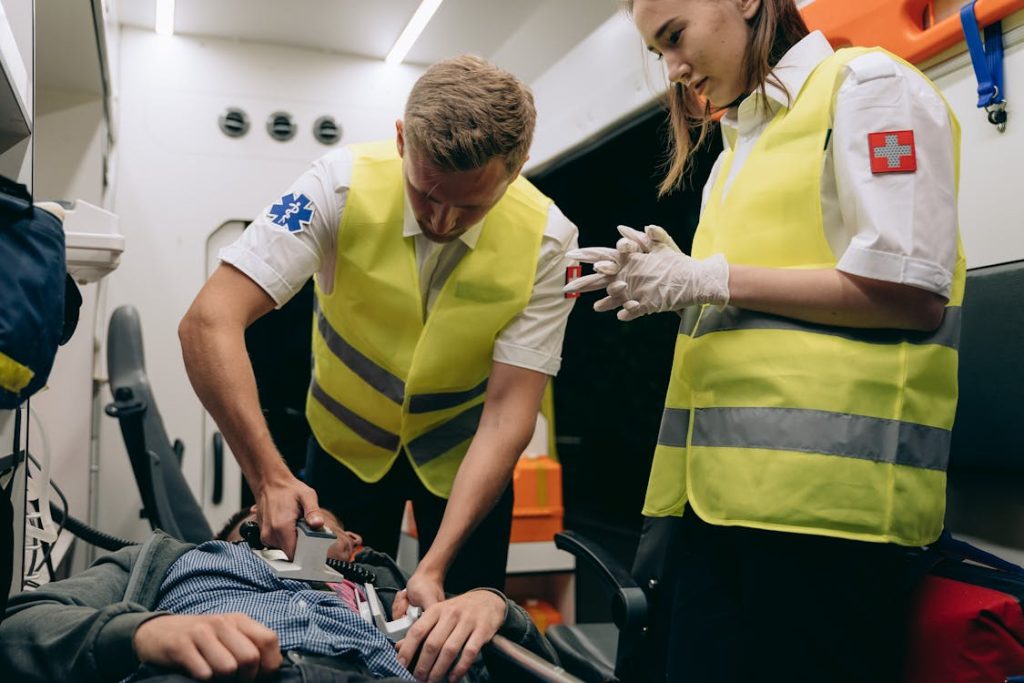First aid is an essential skill that can make the difference between life and death in emergencies. First aiders are the initial responders who provide immediate care to injured or ill individuals before professional medical help arrives. Their roles are multifaceted and vital in maintaining safety and health in various environments. This article explores the critical roles of a first aider and underscores the importance of first aid courses in equipping individuals with the necessary skills to respond effectively in emergencies.

Understanding the Role of a First Aider
A first aider is trained to deliver initial medical assistance in emergencies. Their primary goal is to stabilize the patient and prevent the situation from worsening until advanced medical care is available. The roles of a first aider can be categorized into several key responsibilities.
Assessing the Situation
The first role of a first aider is to quickly assess the situation. This involves evaluating the environment for potential dangers, understanding the nature of the emergency, and determining the number of individuals affected. By doing so, the first aider can prioritize actions and ensure that the scene is safe for both the responder and the patient.
Providing Immediate Care
Once the situation is assessed, the first aider provides immediate care to the injured or ill person. This can include administering CPR, controlling bleeding, treating wounds, and managing shock. The type of care given depends on the specific circumstances and the injuries sustained. Quick and efficient intervention by a first aider can significantly improve the patient’s chances of recovery.
Summoning Professional Help
A crucial part of a first aider’s role is to call for professional medical assistance. They must provide clear and concise information to emergency services, including the nature of the injuries, the number of people affected, and any immediate dangers present. This ensures that the appropriate medical help is dispatched quickly.
Monitoring the Patient
After providing initial care and calling for help, the first aider must continuously monitor the patient’s condition. This includes checking vital signs, such as breathing and pulse, and observing any changes in the patient’s condition. Monitoring is vital to identify any signs of collapsing that may require further immediate intervention.
Providing Reassurance and Comfort
In addition to physical care, a first aider also provides emotional support to the patient. Reassuring the injured or ill person and keeping them calm is essential in reducing panic and stress, which can exacerbate their condition. A calm and composed first aider can help maintain a more stable environment, benefiting the patient’s overall well-being.
The Importance of First Aid Courses
To perform the roles mentioned effectively, individuals must undergo proper training through first aid courses. These courses are designed to equip participants with the knowledge and skills needed to handle a wide range of emergencies. The importance of first aid courses cannot be overstated, as they prepare individuals to respond confidently and competently in emergencies.
Comprehensive Training
First aid courses provide comprehensive training on various emergency scenarios, including cardiac arrest, severe bleeding, burns, fractures, and more. Participants learn practical skills, such as performing CPR, using an automated external defibrillator (AED), and applying bandages. This hands-on training is crucial for building confidence and competence.
Certification and Accreditation
Completing a first aid course usually results in certification, which is often required by employers, especially in high-risk industries. Certification ensures that the first aider has met a recognized standard of training and is capable of providing effective care in emergencies. Accredited courses are designed and monitored by professional bodies to maintain high training standards.
Regular Refresher Courses
First aid skills can diminish over time if not regularly practiced. Therefore, certified first aiders need to participate in refresher courses. These courses update participants on the latest first-aid techniques and guidelines, ensuring that their skills remain sharp and effective. Regular training helps first-aiders stay prepared to handle emergencies confidently.
Building a Safer Community
By equipping more individuals with first aid skills, first aid courses contribute to building safer communities. In workplaces, schools, and public places, having trained first aiders ensures that immediate help is available during emergencies. This widespread readiness can significantly reduce the severity of injuries and save lives.
Conclusion
The roles of a first aider are diverse and critical in providing immediate care during emergencies. Their ability to assess situations, provide care, summon help, monitor patients, and offer reassurance can make a profound difference in outcomes. First aid courses are indispensable in training individuals to fulfill these roles effectively. By investing in first aid training, individuals and communities can enhance their preparedness and resilience, ensuring that they are ready to respond when emergencies arise.








